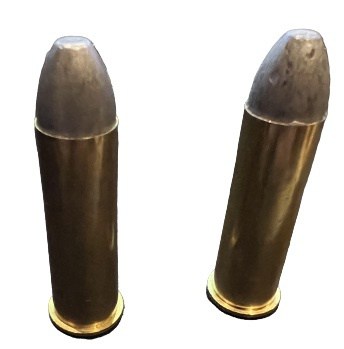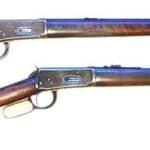
Introduction
Reloading 50-70 Government is a rewarding endeavor, whether you're a historical firearms enthusiast or a hunter looking for reliable stopping power. Fortunately, there are still plenty of ways to acquire the necessary components, though brass can sometimes be scarce. This guide covers everything you need to know about reloading .50-70, from brass acquisition to load development, bullet selection, and firearm-specific considerations.
Introduction
Finding Components
- Brass: Starline occasionally produces .50-70 brass, though availability is hit-or-miss. Buffalo Arms Company is another solid source, and if you're in a pinch, .348 Winchester brass can be reformed.
- Dies: Reloading dies for .50-70 are available from RCBS, Hornady, Lyman, and Lee.
- Bullets: Most .50-70 bullets are .515-inch diameter, though variations exist depending on bore dimensions. Bullet weights typically range from 350 to 500 grains, with 450 grains being closest to historical loads.
- Primers: Large rifle primers work well, including CCI #200, Federal 210, and Winchester Large Rifle. Some reloaders prefer magnum primers (Federal 215) to ensure complete powder burn in full black powder loads.
Black Powder Reloading 50-70

Originally, the .50-70 was designed around 70 grains of black powder, but modern cases and rifles often do better with slightly reduced charges. The commonly cited maximum pressure for the .50-70 Government is about 22,500 psi, and many authors recommend keeping loads for Springfield Trapdoor-strength actions under roughly 18,000 CUP. Always err on the side of caution, especially with older rifles.
Recommended Black Powder Loads
- Full historical load: 450-grain bullet over 65-70 grains of FFg black powder (only in well-maintained rifles)
- Reduced load: 450-grain bullet over 55-60 grains of FFg black powder for lower recoil and pressure
- Black Powder Substitutes: Pyrodex and Triple Seven can be used but require extra cleaning due to corrosive residues
Bullet Types & Weights
Bullet selection has a direct impact on ballistics and rifle performance:
- Round Nose Flat Point (RNFP) – Great for target shooting and short- to mid-range hunting
- Flat Point (FP) – Excellent accuracy and stopping power
- Hollow Point (HP) – Expands on impact, though historically uncommon
- Government Round Nose – The standard 450-grain bullet used in original military loads
Slugging your bore is recommended, as some rifles have bore diameters ranging from .512 to .518 inches. The closer your bullet matches your bore, the better your accuracy.
Cartridge Dimensions & Case Prep
For reliable chambering and consistent ballistics, case dimensions must be precise:
- Case Length: 1.75 inches (trim-to length: 1.74 inches)
- Overall Cartridge Length: 2.25-2.30 inches
- Rim Diameter: .660 inches
- Base Diameter: .565 inches
- Mouth Diameter: .535 inches
Trim cases to 1.74 inches for uniformity, and always inspect for splits, cracks, or other signs of wear before reloading.
Smokeless Powder Reloading 50-70 Considerations
The .50-70 was never intended for smokeless powder, and most older firearms cannot withstand high-pressure loads. If using smokeless, stick to well-documented load data from sources like Lyman’s Reloading Handbook 51st Edition.
Safe Smokeless Loads
- IMR-4198: Many handloaders report success with IMR-4198 in the high-20s grain range under 400–450-grain bullets, but do not exceed manual maximums, and do not assume that a load safe in a modern reproduction is automatically safe in an original Trapdoor.”
- Trail Boss: Great for low-recoil, low-pressure loads
- Never use fast-burning powders (Bullseye, Red Dot, Blue Dot)—they generate excessive pressure
Firearm Considerations
Springfield Trapdoor
- Weaker action compared to Sharps and Rolling Blocks
- Keep loads under 18,000 CUP
- Performs best with 400-450 grain bullets
Sharps Rifles
- Handles heavier bullets and compressed loads well
- Avoid excessive powder charges to prevent barrel wear
- Bullet weights range from 350-500 grains
Remington Rolling Block
- Stronger than the Springfield but still requires careful load selection
- Performs well with both black powder and light smokeless loads
Final Thoughts
Reloading 50-70 is a rewarding process that demands careful attention to component selection, firearm condition, and load safety. Black powder loads offer historical accuracy and reliable performance, while smokeless loads must be approached with caution. Always start with minimum loads and work up slowly, checking for pressure signs.
Additional Resources
- Lyman’s Reloading Handbook 51st Edition
- Buffalo Arms Company for brass, bullets, and dies
- Cast Boolits and The High Road forums for user insights and load development
Safety Disclaimer
Reloading ammunition is inherently dangerous. Always consult multiple sources of load data, follow safety procedures, and ensure your firearm is in sound condition before firing reloaded ammunition. This guide is for educational purposes only and should not be your only resource for reloading 50-70 Government.
If you're not into reloading .50-70, there may actually be some factory-produced ammo from Buffalo Arms available if you're lucky enough to find some when they have it in stock. Check to see if it's in stock here.
We have an article that covers the .50-70 Government cartridge itself. Read it here.
The following books are highly recommended:
Another fantastic resource on Black Powder reloading is Mike Venturino's book, found here. While Lyman's Reloading Handbook 51st edition has a single page on .50-70 reloading, Lyman has a black powder reloading book too. Oddly, It does not cover reloading 50-70 Government. Other reloading manuals can be found here.
If you know of any forums or sites that should be referenced on this listing, please let us know here.












